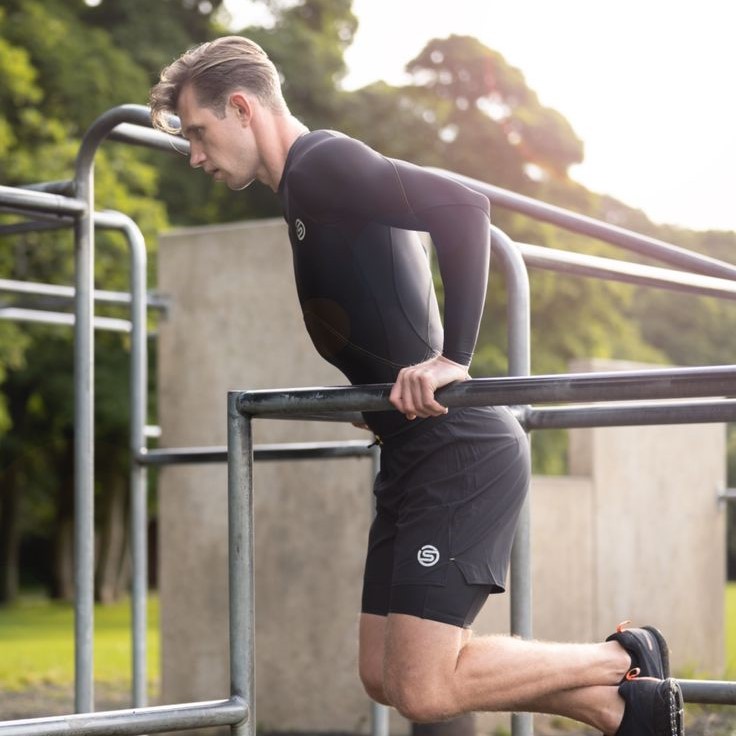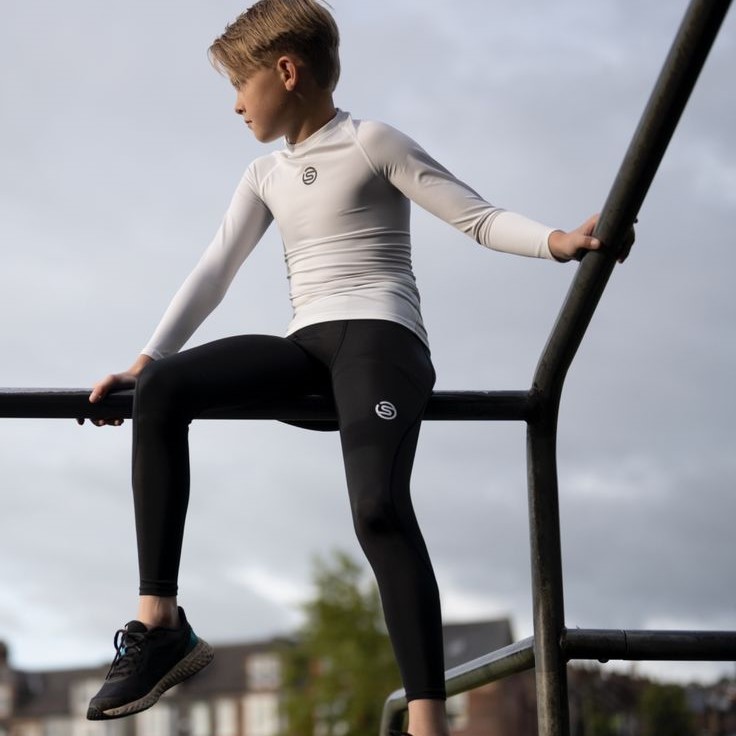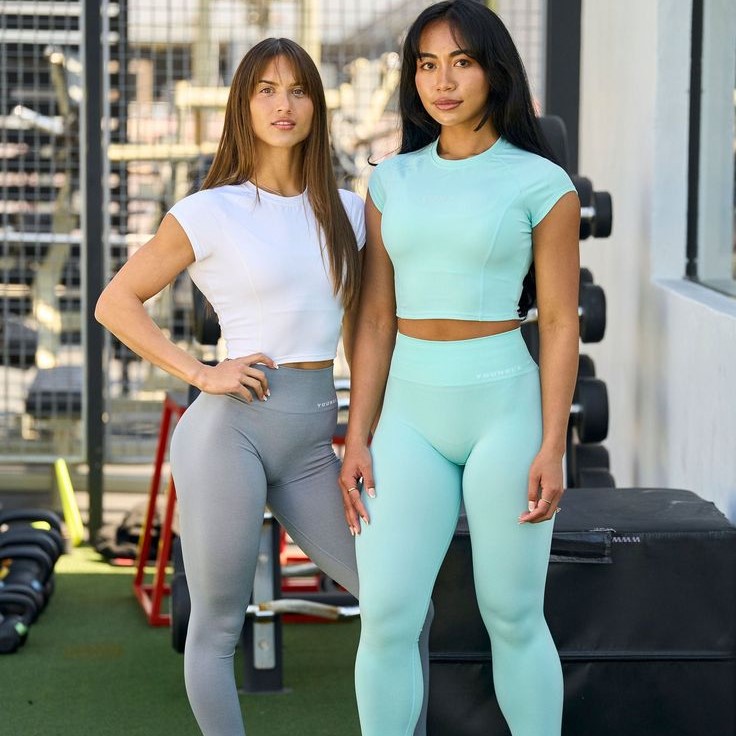What Is Compression Clothing?
Compression clothing is designed to provide pressure to specific body areas. This helps improve circulation and muscle support during activities. Athletes, pregnant women, and travelers often use these garments for health benefits. Let’s explore the definition and purpose of compression clothing and its different types.

Definition and Purpose
Compression clothing applies controlled pressure to the body. This helps enhance blood flow and reduce muscle vibration during movements. Its primary goal is to improve performance, recovery, and comfort. Athletes wear it to prevent injury and reduce soreness. Medical professionals also recommend it for swelling and circulation issues.
Types of Compression Clothing
There are various types of compression clothing available for different needs:
- Compression Socks: Ideal for improving circulation in legs and reducing swelling.
- Compression Sleeves: Supports arms, calves, or thighs during sports or recovery.
- Compression Shirts: Provides upper body muscle support and posture improvement.
- Compression Pants or Tights: Enhances lower body endurance and reduces fatigue.
- Specialized Items: Includes maternity support belts or medical-grade compression garments for health conditions.
These garments cater to specific activities or medical needs, offering versatile solutions to users.
How Compression Clothing Works
Compression clothing is not just about comfort. It actively works to support the body and enhance performance. Here’s how it benefits wearers through its mechanisms and materials.
The Science Behind Compression
Compression garments function by applying consistent pressure to the body. This pressure improves blood flow, delivering oxygen to muscles more effectively. It also helps flush out lactic acid, which reduces muscle soreness. The tight fit stabilizes muscles and reduces vibration during activity. This minimizes fatigue and lowers the risk of injury. Some studies suggest improved proprioception, helping the body sense movement better.

Compression also activates veins and lymphatic systems in specific ways. By compressing veins, it aids blood return to the heart. For lymphatic drainage, it reduces swelling caused by fluid build-up. Overall, the garments combine physical support with biological benefits to aid recovery and performance.
Key Materials Used in Compression Apparel
The effectiveness of compression clothing depends on its materials. Most garments use elastic fibers like spandex or lycra for a snug fit. These materials provide consistent, long-lasting stretch without losing shape. High-quality compression items often combine spandex with moisture-wicking fabrics. This ensures comfort during rigorous activity.
Breathable materials like polyester and nylon are also common. They manage sweat by drawing moisture away from the skin. Medical-grade compression clothing may include stronger fibers for higher pressure levels. Seams in these garments are strategically placed to avoid irritation, allowing full mobility.
Understanding both the science and materials can help users choose the right compression clothing. By doing so, they can fully optimize its health and performance benefits.
Health Benefits of Compression Clothing
Compression clothing offers numerous health benefits by enhancing bodily functions and supporting physical performance. Below are key advantages it brings to users in various activities.
Improved Blood Circulation
Compression garments promote better blood flow by applying consistent pressure. This helps veins transport blood back to the heart efficiently. Improved circulation delivers more oxygen to muscles, boosting energy and endurance. Additionally, these items can reduce swelling in areas prone to poor blood flow, such as legs and feet. Athletes wear them to avoid cramps and recover faster. Pregnant women and travelers also benefit from reduced risk of blood clots.
Reduced Muscle Fatigue and Soreness
Wearing compression clothing minimizes muscle vibrations during movement. This reduces strain and prevents early fatigue. It also aids in flushing out lactic acid, which causes post-exercise soreness. Whether used during or after activities, these garments accelerate muscle recovery. This makes them popular among fitness enthusiasts, helping them return to training sooner.
Enhanced Performance and Recovery
By stabilizing muscles and supporting joints, compression wear improves athletic efficiency. Runners and weightlifters often report better endurance and controlled movements. The garments improve proprioception, allowing the body to sense its position better. For recovery, compression clothing reduces swelling, soothes inflammation, and shortens healing time. This dual benefit of performance enhancement and faster recovery boosts overall physical well-being.
Compression clothing is more than a fitness trend—it is a tool for improved health and performance.
Sports and Fitness
Compression clothing is widely favored in the sports and fitness world. Its ability to enhance performance, speed up recovery, and provide muscle support makes it a game-changer for athletes. Below, we delve into the popular types and key benefits.

Popular Types for Athletes
Athletes often use specific compression garments tailored to their needs. Here are some common types:
- Compression Shorts and Tights: These provide support to the lower body, including thighs and calves. Runners and cyclists frequently use them to boost endurance and reduce muscle fatigue.
- Compression Socks and Calf Sleeves: These are ideal for maintaining lower-leg circulation. They help prevent cramps and swelling during long runs or intense exercises.
- Compression Arm Sleeves: Swimmers, baseball players, and weight lifters use these to stabilize arm muscles. They reduce inflammation and improve recovery after activities.
- Compression Tops (Shirts or Tanks): These stabilize the upper body by supporting shoulders, chest, and back. They are often worn by cross-fitters and strength trainers for better posture and reduced muscle strain.
- Full-Body Compression Suits: These are used for sports needing all-around stamina and recovery, like triathlons or marathons.
Each type is designed to address specific areas, helping athletes achieve their best performance.
Benefits for Endurance and Strength Training
Compression clothing offers significant advantages for endurance sports and strength training. Some key benefits include:
- Enhanced Muscle Stability: By reducing muscle vibration, these garments lower fatigue during high-intensity workouts.
- Improved Circulation: They promote steady blood flow, ensuring muscles get more oxygen. This boosts stamina for prolonged exercises.
- Faster Recovery: Compression garments help flush out lactic acid and reduce swelling. This means quicker recovery between training sessions.
- Better Body Awareness: Compression wear improves proprioception, aiding balance and controlled body movements.
- Reduced Injury Risk: Stabilizing joints and muscles minimizes the likelihood of strains, sprains, or soreness.
For endurance athletes like runners, cyclists, and marathoners, longer sustained effort becomes less daunting. Strength trainers also experience better joint support and quicker recovery after lifting heavy weights.
By incorporating compression clothing into training routines, sports enthusiasts can unlock greater performance and commit to higher goals.
Everyday Use
Compression clothing is not just for athletes or fitness lovers. It can benefit people in everyday scenarios. From pregnant women seeking physical support to frequent travelers or sedentary workers, compression garments provide practical benefits.
Benefits for Pregnant Women
Pregnant women often experience discomfort and swelling due to increased body weight and hormonal changes. Compression clothing, like maternity tights or support belts, improves blood circulation and relieves pressure in key areas. These garments reduce leg swelling, prevent varicose veins, and support the lower back. By minimizing strain, they help ease daily movement and reduce fatigue during pregnancy. Comfortable, breathable materials ensure pregnant women can wear them throughout the day without discomfort.

Compression Items for Long Travel or Sedentary Work
For individuals on long flights or those with sedentary jobs, compression clothing is highly beneficial. Sitting for extended periods can slow circulation, increasing the risk of swelling and blood clots. Compression socks or sleeves help maintain proper blood flow in legs and feet. They prevent stiffness, swelling, and deep vein thrombosis (DVT). Travelers and desk workers experience greater comfort and reduced fatigue when wearing compression garments. Lightweight and breathable designs make such items practical for everyday use without interruptions.
Choosing the Right Compression Clothing
Selecting the right compression clothing ensures maximal comfort and benefits. It’s essential to understand compression levels and other crucial factors before making a purchase. Here’s a guide to help you make an informed choice.
Understanding Compression Levels
Compression clothing comes in different pressure levels, measured in millimeters of mercury (mmHg). Each level serves a specific purpose:
- Light Compression (8-15 mmHg): For mild support, promotes comfort during daily activities like work or travel.
- Medium Compression (15-20 mmHg): Ideal for reducing mild swelling and supporting circulation during light sports or pregnancy.
- Firm Compression (20-30 mmHg): Suitable for athletes, active individuals, or people recovering from minor injuries.
- Medical-Grade Compression (30-40 mmHg or higher): Prescribed for serious medical conditions like deep vein thrombosis (DVT) or severe circulation issues.
Understanding these levels helps you select clothing based on your activity or health needs. If unsure, consult a medical professional for guidance.
Factors to Consider Before Purchase
When selecting compression clothing, keep these factors in mind:
- Purpose of Use: Determine whether it’s for sports, travel, pregnancy, or medical requirements.
- Fit and Size: Measure yourself to find the right size for optimal comfort and effectiveness.
- Material: Look for breathable, moisture-wicking fabrics like spandex or nylon. These improve comfort.
- Type of Clothing: Decide whether you need socks, sleeves, tights, or shirts depending on the area to support.
- Activity Level: Choose higher compression for intense activities and lower compression for everyday wear.
- Budget: High-quality compression garments may cost more but last longer and perform better.
Choosing well-fitted, purpose-specific garments ensures long-term benefits and better results for your health and activities.
Tips for Wearing and Caring
Proper usage and care of compression clothing are essential for gaining its full benefits. Below are practical tips to guide you in wearing and maintaining your compression garments.
Proper Fit and Usage Guidelines
- Choose the Right Size: Measure yourself accurately to ensure a snug but comfortable fit. Avoid garments that are too tight or too loose.
- Follow Usage Instructions: Wear your compression clothing as recommended by the manufacturer or healthcare provider. For sports use, put them on before your activity to reap the performance benefits. For recovery, wear them post-activity or overnight, if advised.
- Ease into Wearing Them: Allow your body to adapt by wearing the clothing for shorter durations initially. Gradually increase wear time.
- Put Them On Properly: Roll the garment up and gently place it on the desired body area. Avoid pulling roughly to prevent damage.
- Time Your Use: Avoid wearing compression clothing for extended periods unless medically advised.
- Remove for Discomfort: If you feel excessive tightness or tingling, remove the garment and check its fit.
Proper usage ensures you maximize support, recovery, and comfort without risk.
Wash and Maintenance Tips
- Read Care Labels: Follow the manufacturer’s cleaning instructions to maintain the garment’s integrity.
- Hand Wash If Possible: Use mild detergent and lukewarm water to gently clean your clothing. Machine washing may reduce elasticity over time.
- Avoid Fabric Softeners and Bleach: These can break down the elastic fibers, reducing compression effectiveness.
- Air Dry: Lay the garments flat or hang them to dry. Avoid using tumble dryers or exposing them to direct sunlight.
- Rotate Usage: Alternate between multiple pairs of compression clothing to prolong their lifespan.
- Inspect Regularly: Check for any wear and tear, such as stretched fibers or damaged seams. Replace compromised garments promptly.
Caring properly for your compression clothing ensures longer durability and consistent performance. By following these tips, you can maintain their quality and enjoy their benefits daily.
Potential Risks and Precautions
Compression clothing offers multiple benefits, but it is essential to recognize potential risks and take precautions. Understanding when to avoid these garments and how to identify signs of improper fit can prevent discomfort and health issues.

When to Avoid Compression Apparel
There are specific situations where wearing compression clothing may not be appropriate:
- Chronic Skin Conditions: If you have eczema or sensitive skin, compression garments may irritate your skin further.
- Severe Circulatory Problems: Those with advanced arterial diseases should avoid compression wear as it might worsen conditions.
- Open Wounds: Do not wear compression clothing on areas with cuts, sores, or surgical wounds.
- Pregnancy Risks: Pregnant women should consult their doctor before using compression garments to ensure safety.
- Extreme Tightness: Avoid garments that are overly tight as they can restrict blood flow excessively.
If you experience any discomfort or suspect issues, stop using the garment and consult a healthcare provider.
Signs of Improper Fit
A proper fit is vital for the effectiveness and comfort of compression clothing. Signs of poor fit include:
- Excess Tightness: Clothing that feels very constricted may harm circulation and cause numbness or tingling.
- Skin Marks: Redness or indentation marks after removing the garment indicate it is too tight.
- Sliding or Folding: Loose or sliding garments won’t provide sufficient compression, failing to deliver benefits.
- Pain or Irritation: Any sharp pain, itching, or rash during wear suggests an incorrect fit or material.
- Breathing Difficulty: Compression tops that restrict chest movement can impede proper breathing.
To avoid improper fit, measure yourself carefully and follow manufacturer sizing charts. Regularly check for wear and tear that may alter the garment’s compression efficacy.
By addressing these risks and ensuring proper fit, users can enjoy compression clothing safely and effectively.
